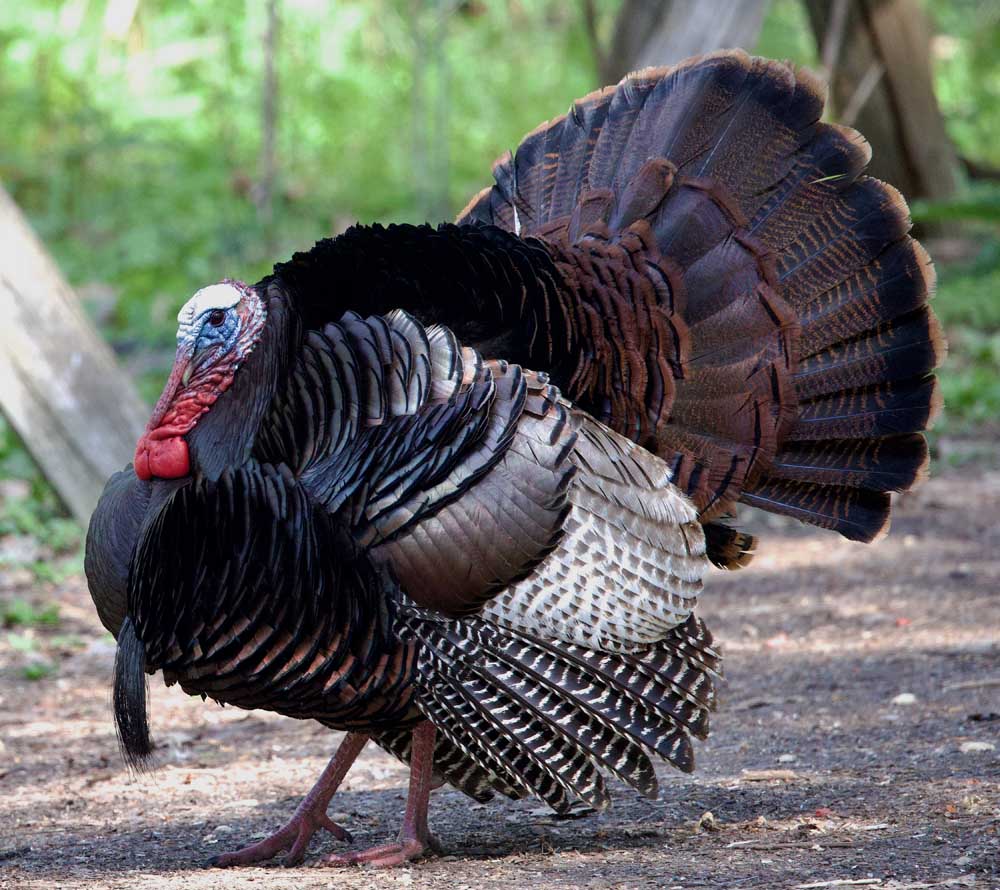Birding: Fun facts about turkeys
Published 8:50 am Friday, November 24, 2023

- Male wild turkeys fan their tails and strut around to attract and maintain a harem of females.
I hope you have had a happy turkey day! Thanksgiving is such an important family time. Thousands of folks travel to be with family. On this holiday season National Geographic reported on the status of the wild turkey population in the United States with particular emphasis on the Eastern U.S. As I traveled through Idaho this past week, wild turkeys were the birds to watch for. We tallied over 100 birds. Their importance in society is underlined by the fact that Benjamin Franklin once proposed that the wild turkey be the national emblem of the USA.
Turkeys are fleet of foot, running swiftly to avoid danger. They are excellent fliers and usually rest high in trees and in groups. They are omnivorous, feasting on acorns, other nuts, and vegetation as well as insects.
The wild turkey almost reached the status of extinction in North America. Scientists indicate that it was eliminated from most of its range by the early 1900s due to hunting and the destruction of their habitat. Since then, however, wild turkeys have prospered due to their reintroduction in the 1960s and 1970s and the restoration of their habitat. It has done extremely well in the eastern United States. New Hampshire now boasts about 45,000 birds, and Maine’s count is 70,000 birds. Vermont’s population of wild turkeys is about 50,000 and there are about 30,000 in Massachusetts. (National Geographic, 2023). According to Audubon (2021), they are “resident in much of the southern United States from Arizona east, as far north as New England.” It has also been introduced in the west.
The male wild turkey is well known for its gobble, gobble in the spring during courtship as well as its beautifully fanned tail which it uses as it struts about to attract and maintain a harem. Females are smaller and quieter but make yelping, clucking and purring sounds if their mood is right! The male has an unfeathered blue and red head. It has large bluish-red wattles and a hair-like beard on its chest. Its body is dark with a bronze iridescence. The female, on the other hand, is plainer. She wears dark purplish body feathers with a bronze iridescence. She lacks the wattle and the beard. Wild turkeys are unlike the domestic turkey. The domestic variety is chunkier and tends to be tamer.
Turkeys are fleet of foot, running swiftly to avoid danger. They are excellent fliers and usually rest high in trees and in groups. They are omnivorous, feasting on acorns, other nuts, and vegetation as well as insects. They scratch in the leaf litter to find the goodies they enjoy. A surprising finding is that they have prospered because they have learned to get along with humans and in human environments. Their survival is also enhanced by the presence of bird feeders. There are hilarious stories of their antics. National geographic tells the tale of wild turkeys “disrupting traffic, pecking at front doors, and a tendency to parade through streets blocking traffic.” They have also been observed pecking at their reflection in peoples’ cars (National Geographic, 2023). They have learned how to live in urban environments. Natural enemies are non-existent now and hunting is not an issue. (National Geographic, 2023)
Wild turkeys are beautiful and interesting birds even though some states consider them to be troublesome! I, for one, enjoy them and love to see them even if they were to peck at my car or strut their stuff along roadsides. Happy birding!








